INTRODUCTION
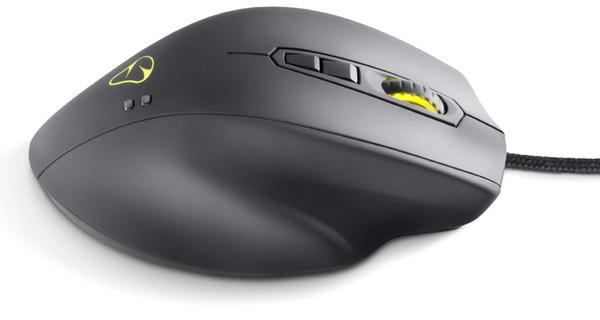
When people are in the market for a brand new gaming mouse they usually make their decision based on four things such as the type of laser/optical sensor used, number of available programmable buttons, shape/grip and of course looks (for example RGB illumination seems to be quite important nowadays). What if however there were other things consumers could look for when out looking to get a brand new gaming mouse? MIONIX really thinks there are and so in 2014 they announced the very first smart gaming mouse also capable of recording the user's biometric information (such as heart rate) and movement data (clicks and speed and traveled distance) by using several state of the art sensors. Its name is the NAOS QG Optical Smart Gaming Mouse and although it took some time to reach our lab it's finally here.
Mionix is based in Malmo, Sweden and creates high quality, well designed gaming hardware products. Mionix is a company with ridiculous ambitions that is set on changing the desk experience. For billions of people the peripherals on our desk are either toned in black plastic or grey aluminums. Our soul mission is to make the desk a fresh place.
The NAOS QG (quantified gaming) is based on the extremely popular PixArt PMW3360 optical sensor which features zero hardware acceleration, 12.000DPI (dots per inch) resolution (5 programmable in 100DPI steps), tracking speed of up to 250IPS (inches per second) and up to 50G acceleration (also supports angle snapping, angle tuning and LOD adjustment). Under the hood of the right-handed 4 layer rubber coated enclosure (identical with all the previous NAOS models) we also find two biometric sensors (HRM/GSR), 7 programmable buttons, 2 RGB lighting zones, OMRON switches for the primary buttons (up to 20 million clicks - all other buttons feature TTC switches) and a 32-bit ARM Cortex M3 32MHz processor with 128KB of onboard memory and 1000Hz polling rate.
SPECIFICATIONS AND FEATURES

PACKAGING AND CONTENTS
The NAOS QG gets shipped inside a small grey box that has a product picture at the front and the company logo.
A few words about the product are printed on the left side.
At the rear we see the features list printed in 22 languages.
The interior of the box is almost entirely taken by two pieces of formed plastic used to protect the mouse.
Along with the NAOS QG Optical Smart Gaming Mouse MIONIX also packs several stickers and the quick start guide.
THE NAOS QG
The dark grey NAOS QG is a medium to large sized model that measures 120mm in length, 85mm in width and 40mm in height and weighs 109g.
Two programmable buttons are placed on the left side of the housing (due to the 4 layer rubber coat it's very easy to leave your fingerprints on the NAOS QG).
At the rear we find the company logo (also one of the two RGB zones), Pixart PAH8001EI-2G heart rate monitoring sensor (up to 3000fps) and a galvanic skin response sensor (TiN coated copper electrodes).
What we've always liked with the NAOS line of gaming mice is the large pinky rest located on the right side and the NAOS QG is no exception.
Two programmable DPI selection buttons are located at the top of the enclosure.
The clickable and rubber coated scroll wheel is also programmable (also one of the two RGB zones).
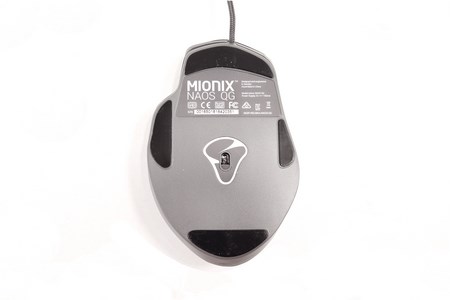
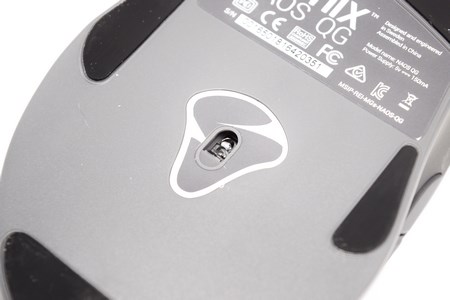
Four large PTFE feet and the PMW-3360 optical sensor are the things we see at the base of the NAOS QG.
On the end of the 2 meter long braided cable MIONIX has placed a gold plated USB plug.
MIONIX HUB
You can grab the latest version of the Mionix Hub software from their official page seen above.
The Hub software is very easy to navigate since it has a total of 6 tabs on the left menu (you can create up to a total of 7 profiles).
From the buttons tab you can program all 7 available buttons with a variety of assignments as seen above.
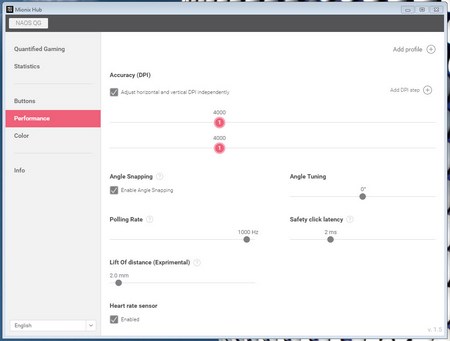
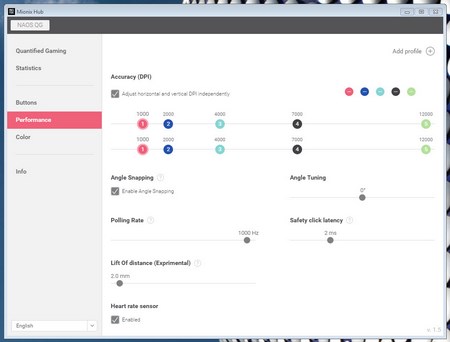
Inside the performance tab MIONIX has placed everything related including the DPI selection (up to 5 DPI presets), angle snapping and tuning settings, polling rate, safety click latency, LOD (lift-off distance) and heart rate sensor.
As expected from the color tab you can change the color of both zones (individual adjustment).
The INFO tab allows you to update the firmware (this was our first stop actually but we decided to showcase it in order - many extra settings in the Hub after the update).
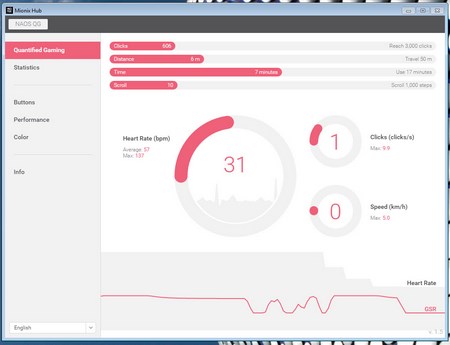
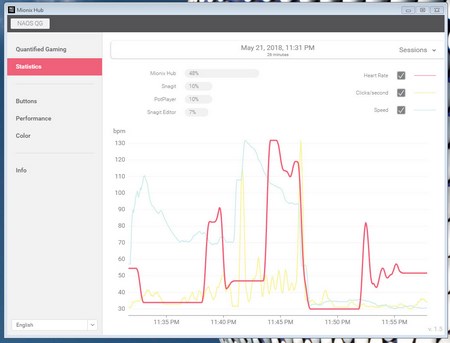
From the quantified gaming and statistics tabs you can check your heart rate, clicks per minute, total clicks, speed, total distance travelled and you can also see a list of programs used (unfortunately it doesn't seem to recognize games).
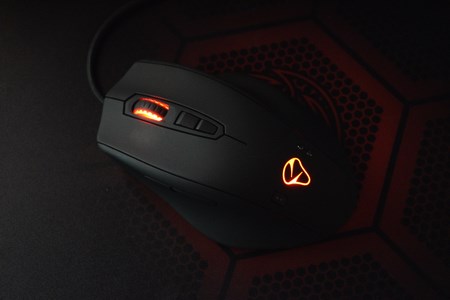
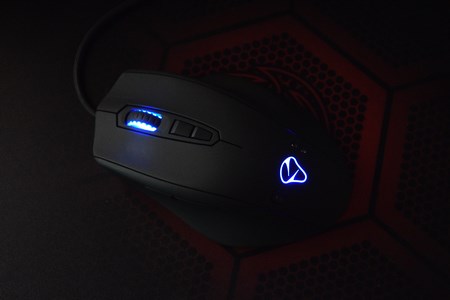
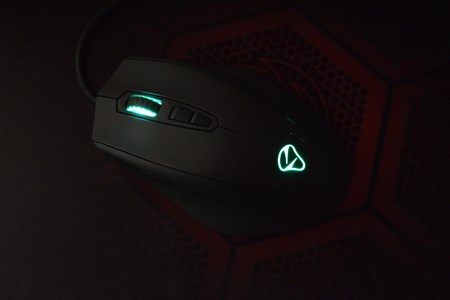
Here you can see some of the colors one can assign to the two RGB zones.
CONCLUSION
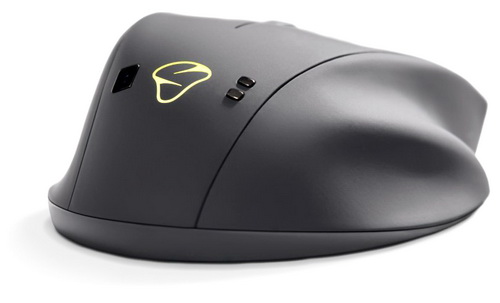
When the NAOS QG (and the Kickstarter campaign to make it happen via which they successfully raised $107,125 from 840 backers) was announced to Mionix media partners in mid-2014 i admit that we were quite intrigued so naturally we requested a sample as soon as the "final" ones rolled out of the factory. Initially that was to happen in 2015 (early samples were tested back then) but due to some unforeseen delays the final bug-free product was ready to be shipped in late 2016 and as you can all see it took over a year for a final product to make it here (mostly due to our fault for not asking Mionix again when the final units were ready). With that out of the way the NAOS QG is even better than what Mionix had in mind when they announced it since the final units also came with a two zone RGB lighting and several "extra" software settings (including macro commands). As expected Mionix once again used the classic medium to large sized housing as with previous models which provides excellent grip (the 4 layer rubber coating also helps) and glide and as for the PMW3360 optical sensor well after being used in a plethora of gaming mice over the years we all know just how fast and accurate it is. As for the heart rate sensor well sometimes it’s not really on the spot (depends a lot on how your hand is positioned on the sensor so do keep that in mind) but for the most part it’s within 5-10bpm from your real ones (compared results against those of a polar chest heart rate sensor).
Counting roughly 17 months in the market already the NAOS QG Optical Smart Gaming Mouse is now more affordable than ever and so it retails for just USD69.93 inside the USA (Amazon.com) and 56Euros inside the EU (Amazon.co.uk). Honestly when the NAOS QG had a retail price tag of USD100/100Euros attached to it we were all somewhat skeptical as to whether or not people should pay that much for the extra hear rate and GSR sensors. As things stand now however if you’d like to have a high quality and performance gaming mouse which also sports such features then the NAOS QG represents a great value for your money and that’s also why it gets our Golden Award.

PROS
- Build Quality (OMRON Switches – 20 Million Clicks)
- Size (Ideal For Medium/Large Hands)
- Accuracy/Grip (4 Rubber Coat Layers)
- 12000DPI/250IPS/50G PixArt PMW3360 Optical Sensor
- Heart Rate & Galvanic Skin Response Sensors
- 128kb Onboard Memory
- 7 Programmable Buttons
- 2 Individual RGB Zones
- Braided Cable With Gold Plated USB Connector
- Current Price
CONS
- Right Hand Only
- Design/Looks (Compared To All The Latest Models)

 O-Sense
O-Sense





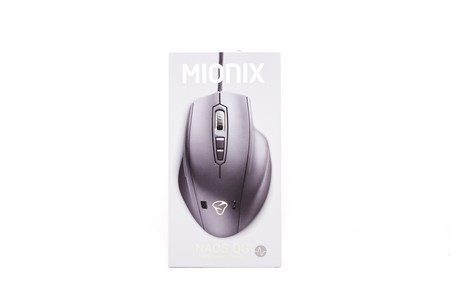
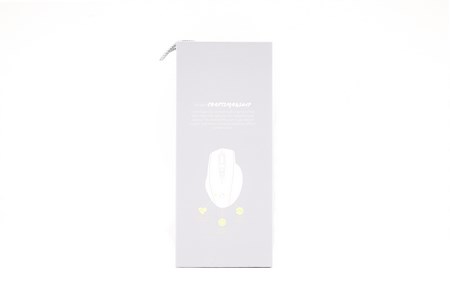

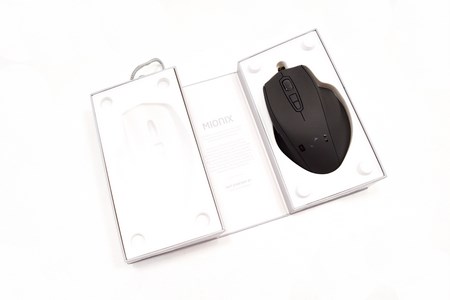
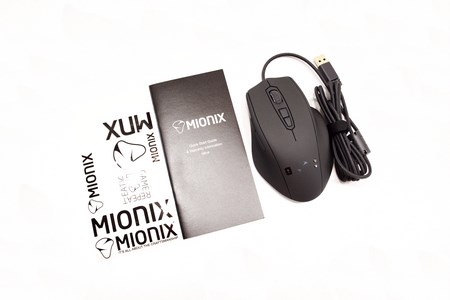
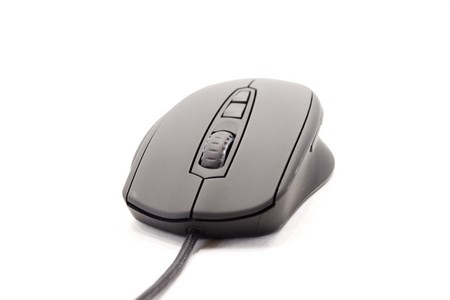
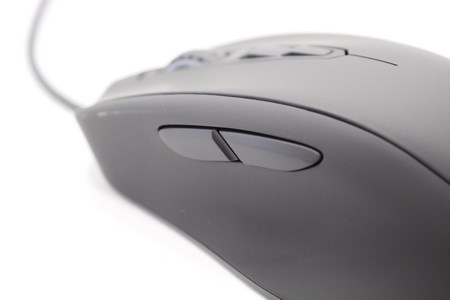
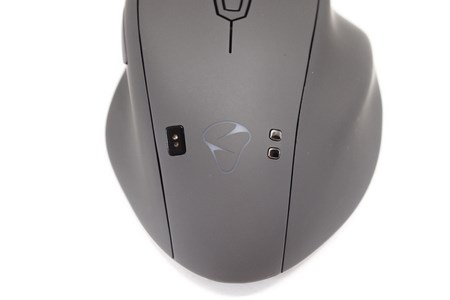
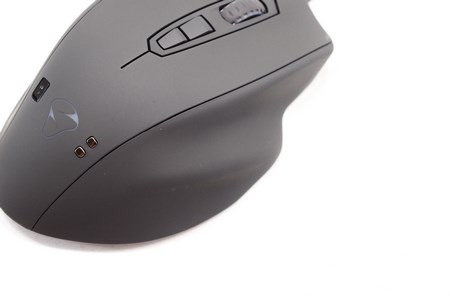
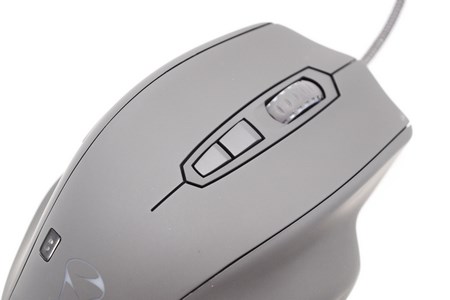
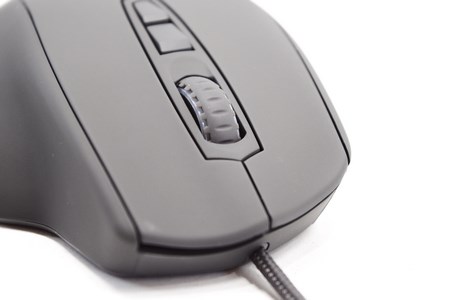
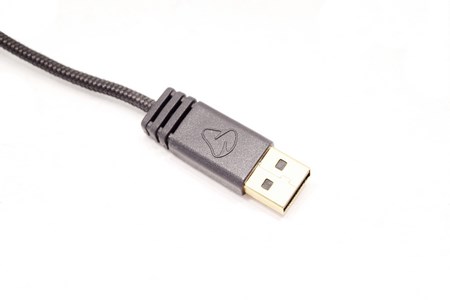

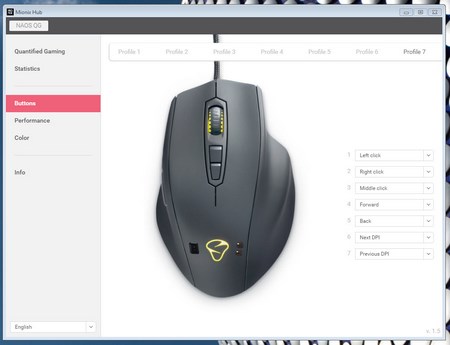
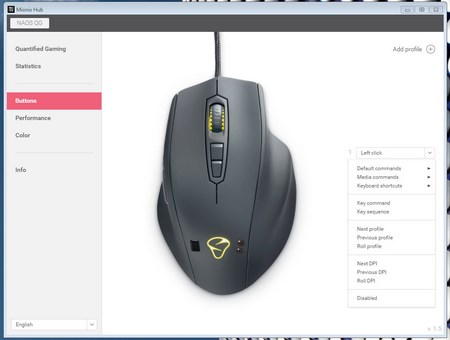
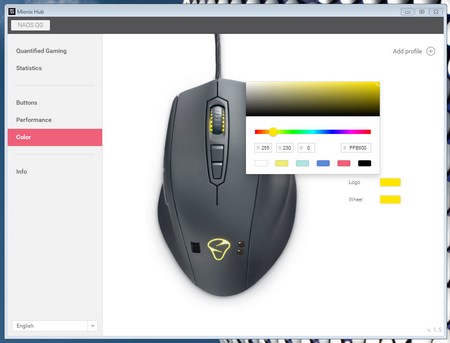
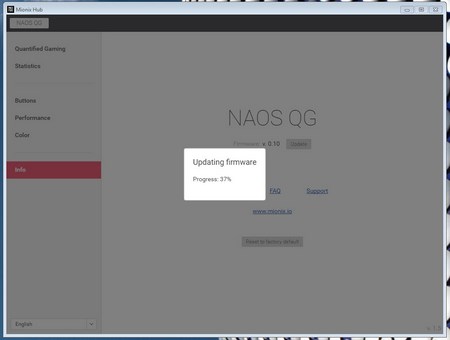


.png)

